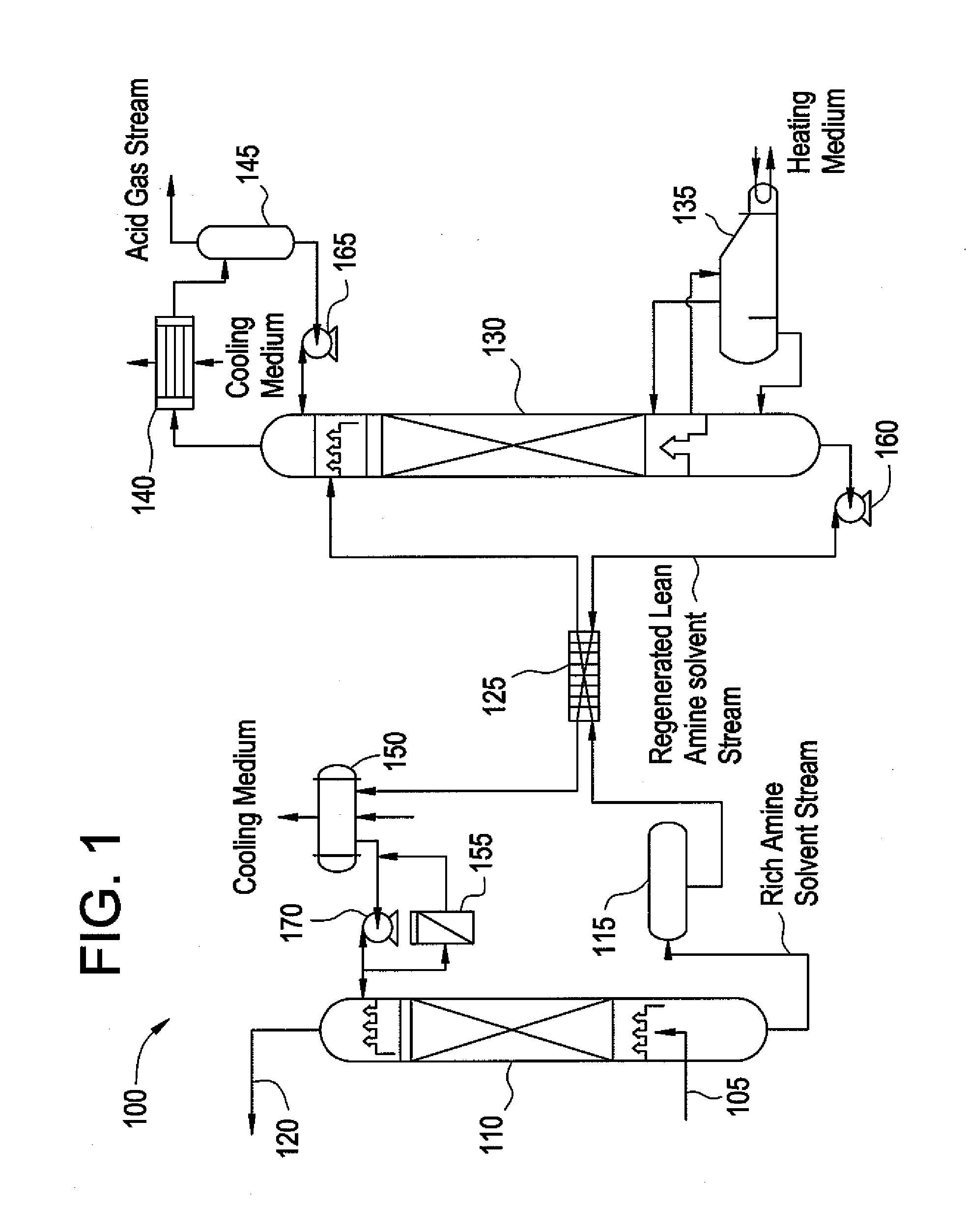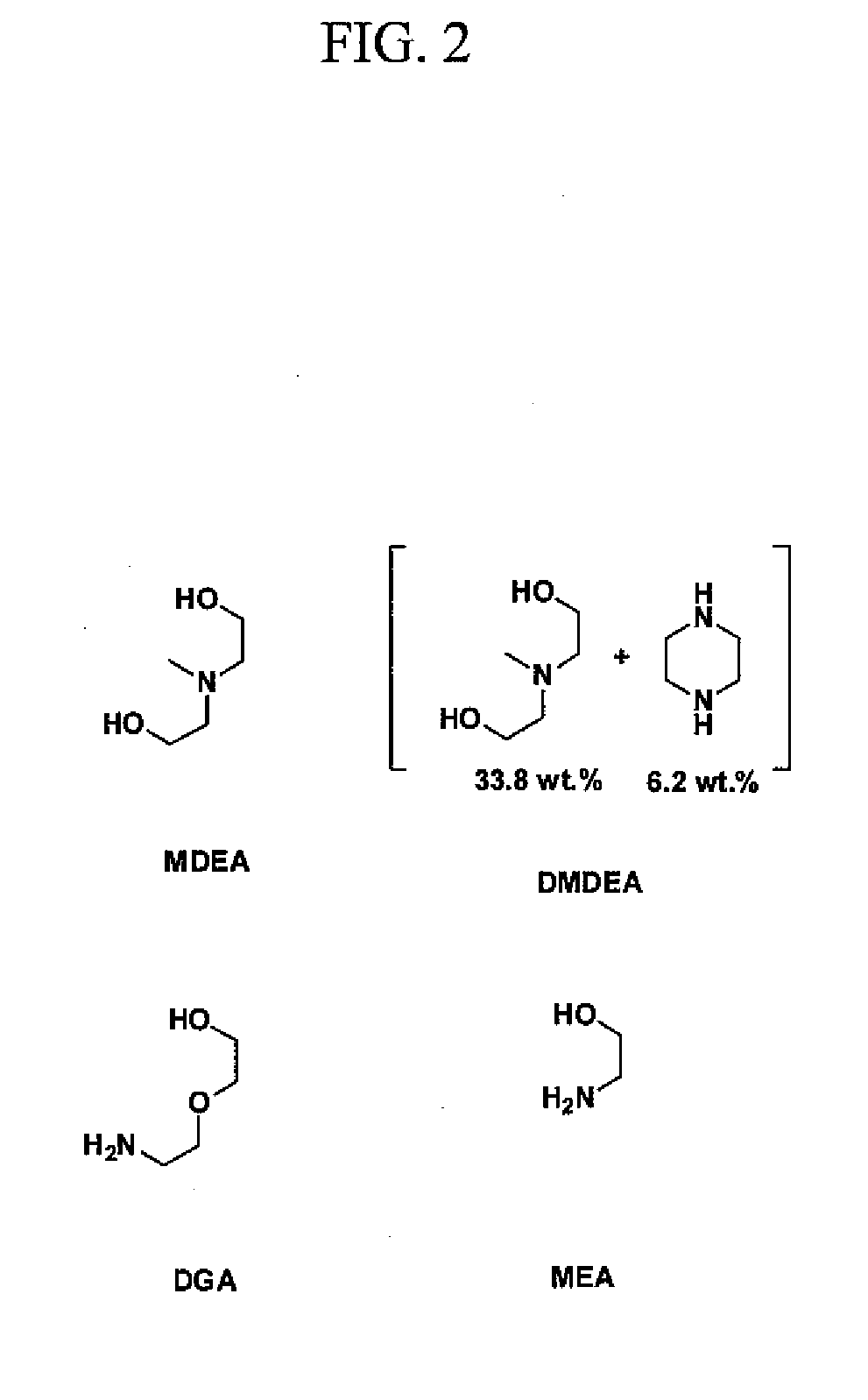Composition for treating acid gas
- Summary
- Abstract
- Description
- Claims
- Application Information
AI Technical Summary
Benefits of technology
Problems solved by technology
Method used
Image
Examples
example 1
[0064]The testing in this Example was used as a means of screening potential acidic contaminant scavengers and also to confirm the performance of existing scavengers currently in use. The test was designed to determine the maximum capacity of an amine solvent in absorbing acidic gases. Different amine solvents were compared. The amine solvents were saturated with acidic gases at a constant pressure and temperature until no more gas was able to be absorbed. The difference between the rich and lean loadings was used to determine the working capacity. The test was designed to regenerate the solvent by boiling, to remove the acidic gases so that the lean loading of CO2 in an amine solvent could be determined.
[0065]Solvent performance was characterized by liquid loading at equilibrium with defined composition gas mixtures at simulated amine contactor and regenerator conditions relative to industry benchmarks.
[0066]To highlight the advantages of the disclosed novel amines, several specifi...
example 2
[0073]The boiling points of the disclosed amines range from about 200 to about 280° C. at 1 atm (compared to MEA at 170° C. and 1 atm). Such higher boiling points help significantly reduce the losses and potential environmental releases currently associated with the volatility of MEA and also help to prevent CO2 contamination during solvent regeneration. Initial laboratory stability testing has indicated that unlike MEA, which is known to degrade rapidly under process condition, the disclosed amines are highly robust at simulated process conditions showing no signs of degradation.
example 3
[0074]To further highlight the utility of the tested amities for carbon capture, a 25% CO2 gas stream at 90 psi was passed through the absorbents at 40° C. until they reached saturation and the depth of removal was recorded. Importantly, the depth of removal for the tested amines (Sorbents I and IX) approached 0%, an indication that they are highly efficient at CO2 capture as shown in Table 2 above.
PUM
| Property | Measurement | Unit |
|---|---|---|
| Temperature | aaaaa | aaaaa |
| Temperature | aaaaa | aaaaa |
| Pressure | aaaaa | aaaaa |
Abstract
Description
Claims
Application Information
 Login to View More
Login to View More - R&D
- Intellectual Property
- Life Sciences
- Materials
- Tech Scout
- Unparalleled Data Quality
- Higher Quality Content
- 60% Fewer Hallucinations
Browse by: Latest US Patents, China's latest patents, Technical Efficacy Thesaurus, Application Domain, Technology Topic, Popular Technical Reports.
© 2025 PatSnap. All rights reserved.Legal|Privacy policy|Modern Slavery Act Transparency Statement|Sitemap|About US| Contact US: help@patsnap.com



